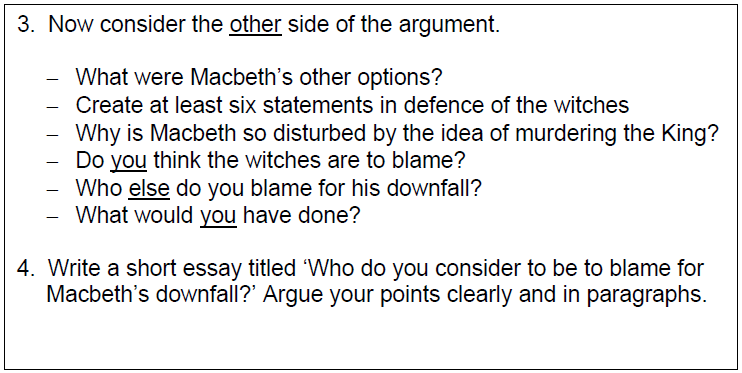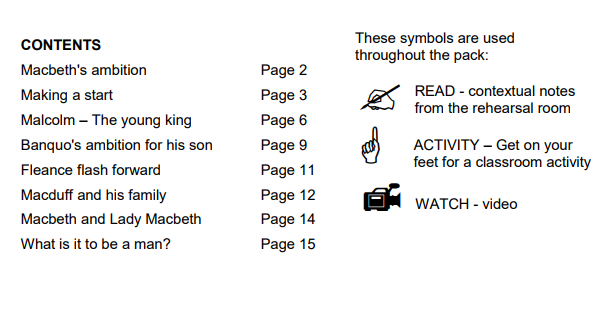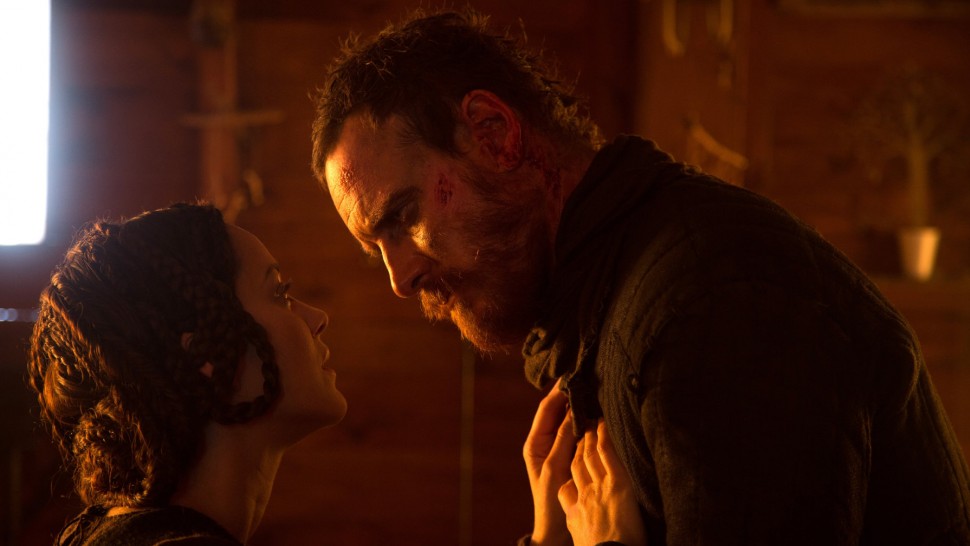9 great teaching tools for studying William Shakespeare’s Macbeth in KS3/4 English

Compare soliloquies, print out quote posters, debate the role of fate and more with this teacher toolkit for The Scottish Play…

- by Lloyd Burgess
- Former editor of Teachwire

Macbeth/Christmas Carol walkthrough

If you’re preparing students to sit AQA English Literature Paper 1, use this PowerPoint/PDF to walk through a past paper with them. It focuses on Macbeth by William Shakespeare and A Christmas Carol by Charles Dickens.
Quotation posters

The original king of the quote, Old Billy Boy knew his way around a good line or two.
And given that his work has been around a while, and has proved pretty popular, there are plenty of wonderfully designed digital artworks that feature his plays’ most famous quotations.
Here are some excellent ones you might want to check out:
- Is this a dagger which I see before me?
- Something wicked this way comes
- Double, double toil and trouble
- Look like th’ innocent flower,. But be the serpent under ‘t
- What’s done cannot be undone
Tomorrow, and tomorrow, and tomorrow
Macbeth’s soliloquy upon hearing the news of his wife’s death is one of the greatest things ever written, from the greatest writer who ever lived:
Tomorrow, and tomorrow, and tomorrow,
Creeps in this petty pace from day to day,
To the last syllable of recorded time;
And all our yesterdays have lighted fools
The way to dusty death. Out, out, brief candle!
Life’s but a walking shadow, a poor player,
That struts and frets his hour upon the stage,
And then is heard no more. It is a tale
Told by an idiot, full of sound and fury,
Signifying nothing.
But if that’s not enough of a reason to study this key part of the play, here’s a young Sir Ian McKellen in 1979 analysing it line by line (above).
What more could you want?
Life’s but a poor player
If you want to compare and contrast some different deliveries of this wonderful speech, there are loads available online, from Sir Ian McKellen’s own (above) to alternative options from some of film and theatre’s finest such as: Patrick Stewart, Michael Fassbender, Orson Welles, Jon Finch and Sean Connery.
Macbeth infographic

This cool little infographic is a handy reminder of all the key characters, themes and symbols of the play.
You can print it out and put it up on your classroom wall, or let each student have it on their tablet or device so the information is always at hand.
Either way, you can download it here.
Bitesize summary
If you need an easily digestible video summary for your class, this charming little BBC Bitesize one comes in at under five minutes and is presented by comedian Russell Kane, which is nice.
Printable worksheets

Worksheets. Everyone needs worksheets. So here’s a bunch:
- Have a fate debate over the role of the witches in Macbeth
- Get all theatrical with these drama activities
- Look at the language of the play
- Or the imagery
- And write a persuasive speech like Malcolm’s
Teachers guide

And, of course, if you’re after a handy teacher’s guide then the Royal Shakespeare Company has you covered.
Film study

Justin Kurzel’s 2015 film adaptation isn’t perfect, but it’s a very good effort despite trying to cram the whole play into less than two hours of screen time.
One for KS4 students (it’s got a 15 BBFC rating), Into Film has put together a bunch of resources to run alongside the movie including a film guide and this Power Players resource that looks at the filmmaking techniques used to draw out the play’s themes.
Browse Romeo and Juliet KS3 and KS4 resources and revision resources for GCSE English Literature.







